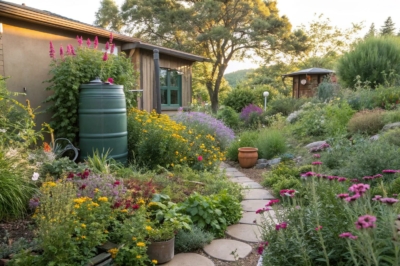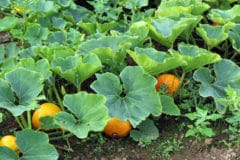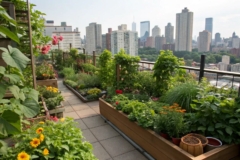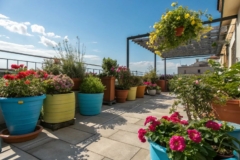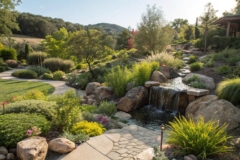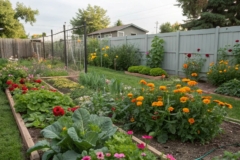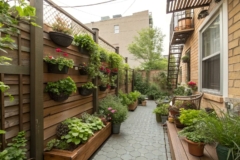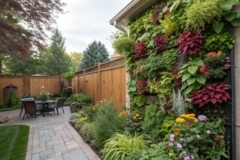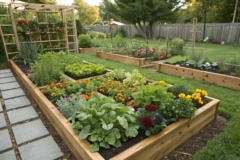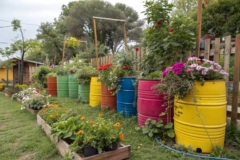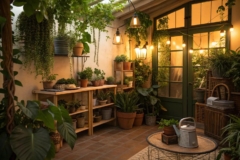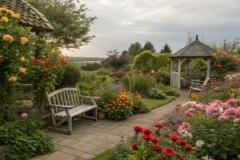1. Install a Rainwater Collection System
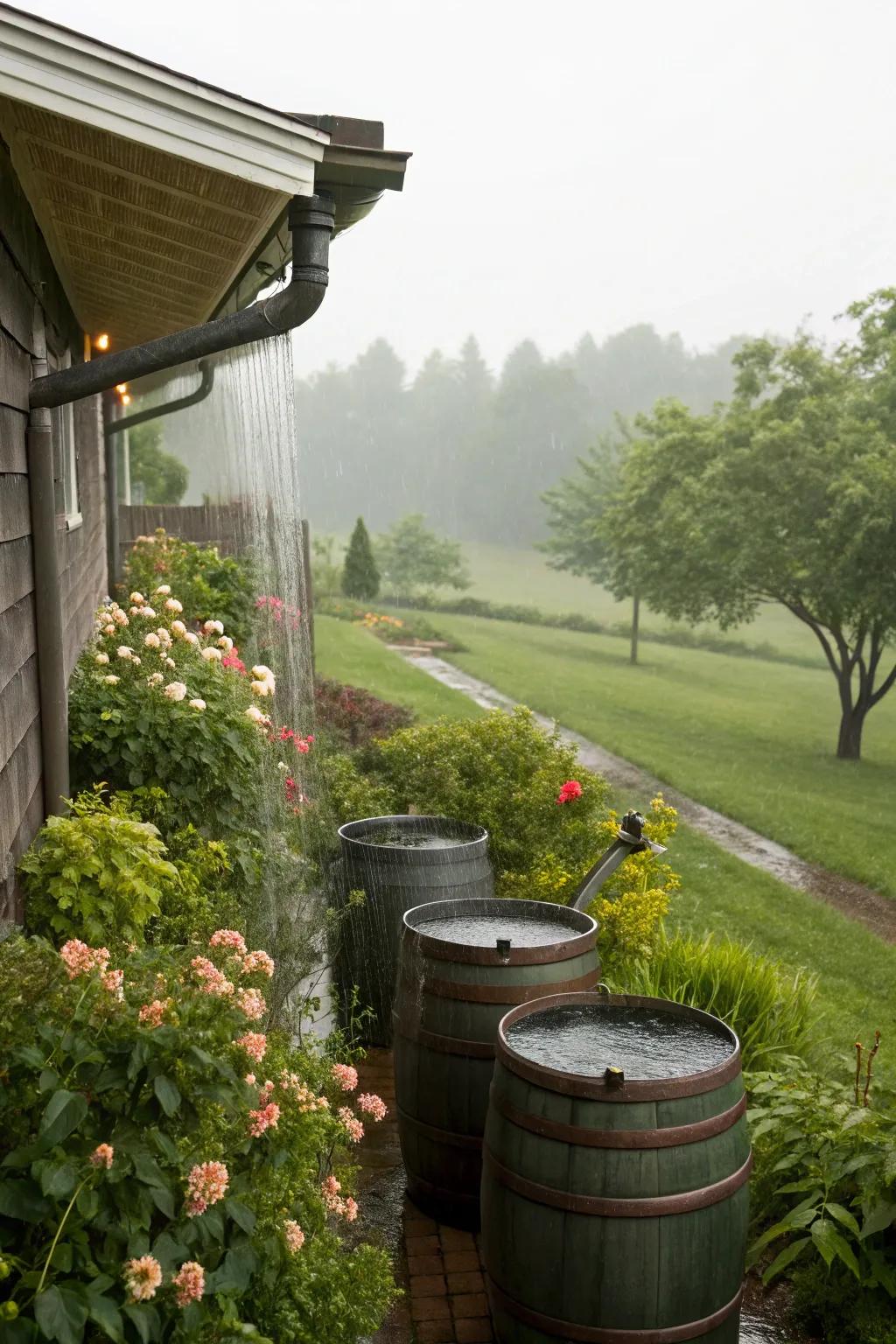
Collecting rainwater is a simple way to conserve water and reduce your water bill. My rain barrels have become an essential part of keeping my plants hydrated during Texas’ dry spells.
You might like:
- Rain Barrel with Faucet: Save water effortlessly and nourish your plants with a high-capacity rain barrel collection system.
- Downspout Diverter Kit: Efficiently channel rainwater to your barrels using an easy-to-install downspout diverter kit.
- Rain Barrel Linking Kit: Connect multiple barrels for increased capacity using a convenient rain barrel linking kit.
2. Practice Companion Planting
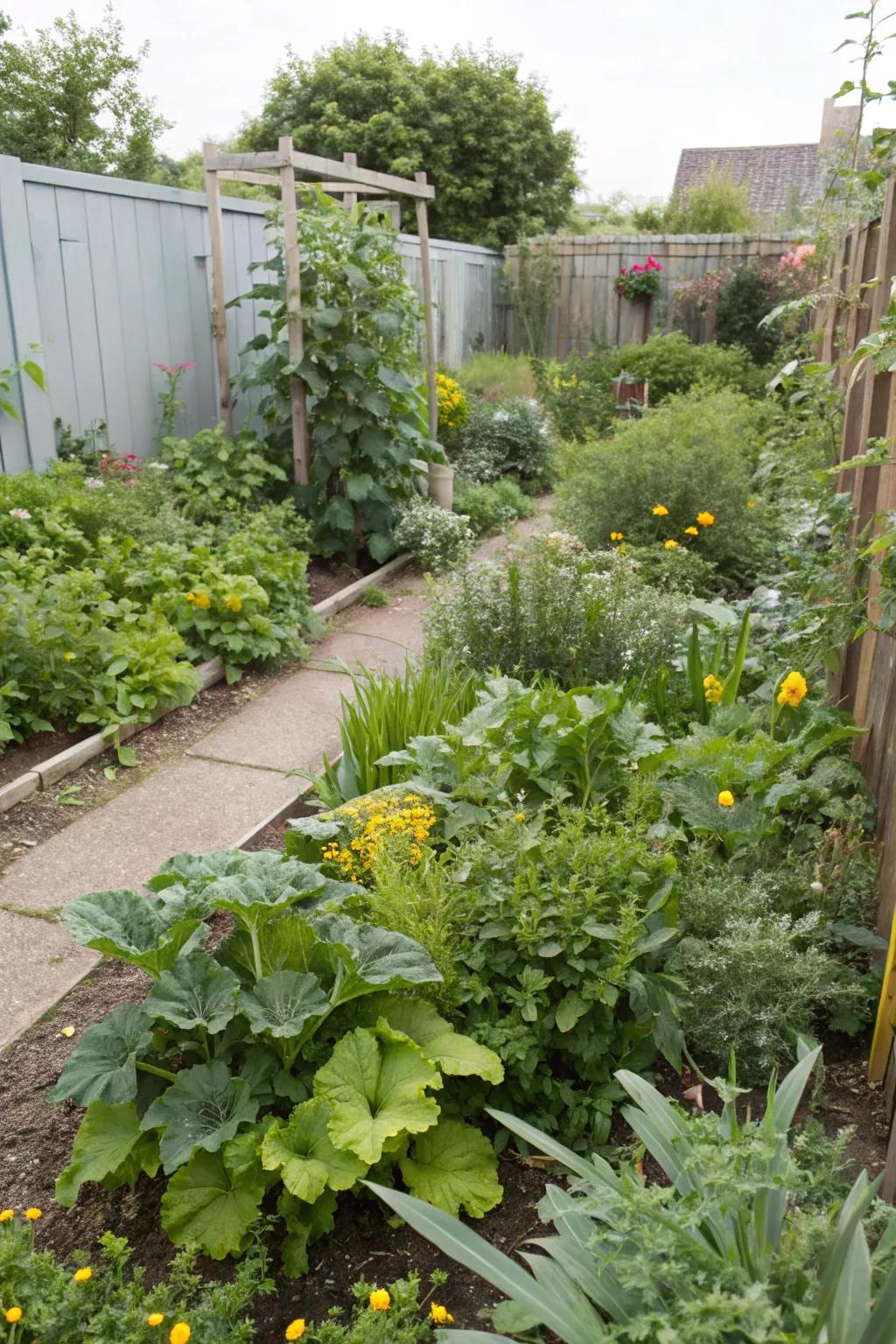
Pairing plants that benefit each other is a game-changer. I’ve seen fewer pests and healthier crops by using companion planting techniques.
Might be a good match:
- Organic Vegetable Seed Kit: Start your companion planting journey with this diverse organic seed kit for healthier gardens.
- Garden Trellis for Climbing Plants: Support your plants with a sturdy trellis, perfect for climbing beans and tomatoes.
- Natural Pest Control Spray: Protect your garden naturally with an eco-friendly pest control spray, enhancing companion planting benefits.
3. Grow Your Own Edibles
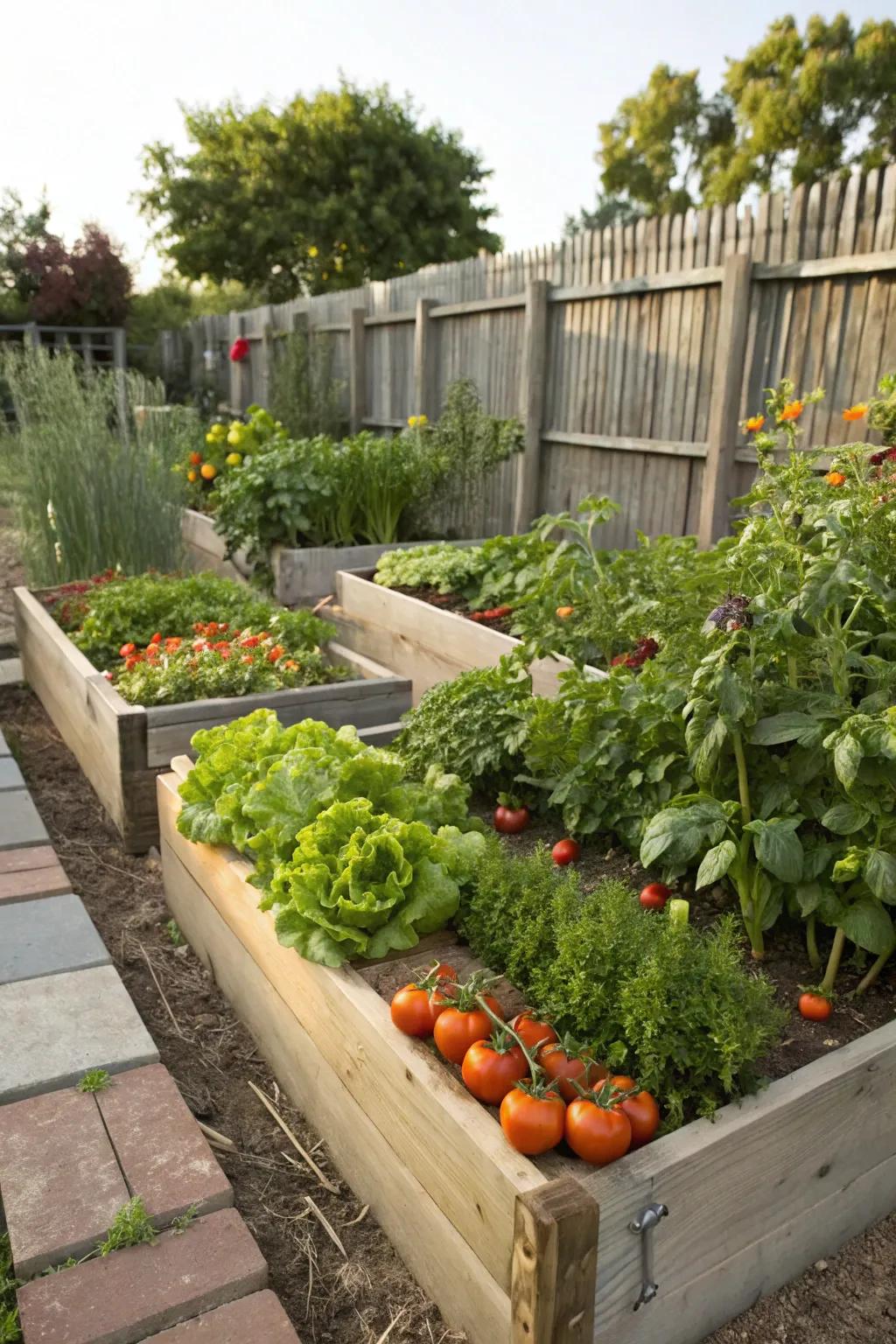
Nothing beats the taste of homegrown herbs and vegetables. My backyard is filled with raised beds where I grow everything from tomatoes to basil, reducing my grocery trips and packaging waste.
Possibly handy products:
- Raised Garden Bed Kit: Elevate your gardening experience with a durable raised bed, perfect for edibles and herbs.
- Organic Vegetable Seeds Pack: Kickstart your edible garden with a diverse pack of organic vegetable seeds.
- Gardening Tool Set: Equip yourself with essential tools for planting and maintaining your homegrown edibles.
4. Adopt a Zero-Waste Approach
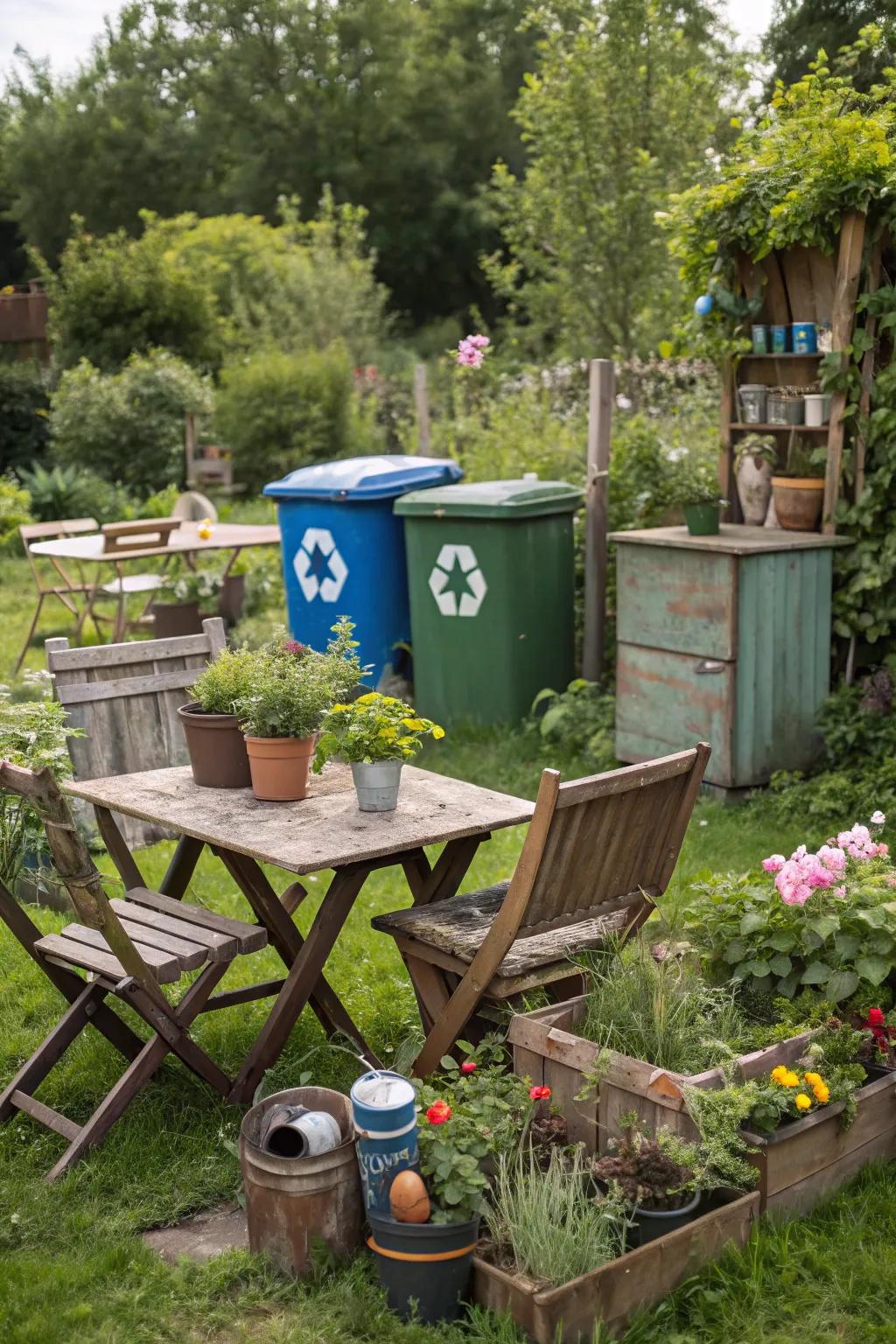
Embrace zero-waste gardening by reusing household items creatively. My garden thrives with upcycled planters and composting, reducing waste significantly.
A few helpful options:
- Upcycled Planters: Transform your garden with upcycled planters, reducing waste and adding unique charm.
- Composting Bins: Enhance your zero-waste efforts by using composting bins for sustainable gardening practices.
- Recycled Garden Furniture: Choose recycled garden furniture to support sustainability and enjoy stylish, eco-friendly outdoor seating.
5. Use Organic Pest Control
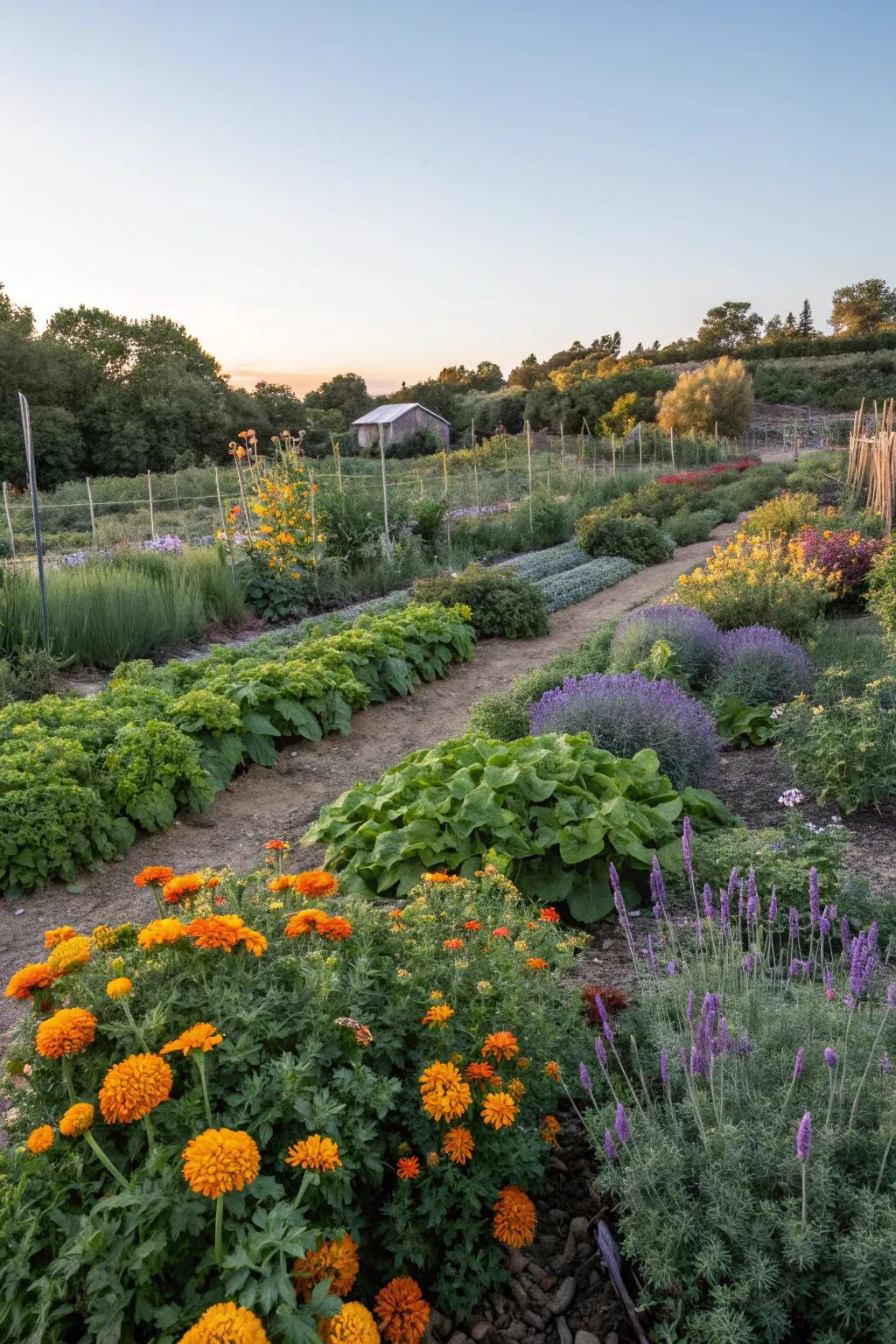
Ditch chemicals and opt for organic pest control methods. Homemade garlic sprays and beneficial insects have kept my garden healthy and pest-free.
Check these products out:
- Organic Garlic Garden Spray: Protect your garden using natural garlic sprays to deter pests effectively and safely.
- Beneficial Insect Kit for Gardens: Introduce beneficial insects to maintain garden health and naturally reduce pest populations.
- Neem Oil Insecticide: Keep pests at bay with all-natural neem oil that’s safe for plants and the environment.
6. Build a Bug Hotel
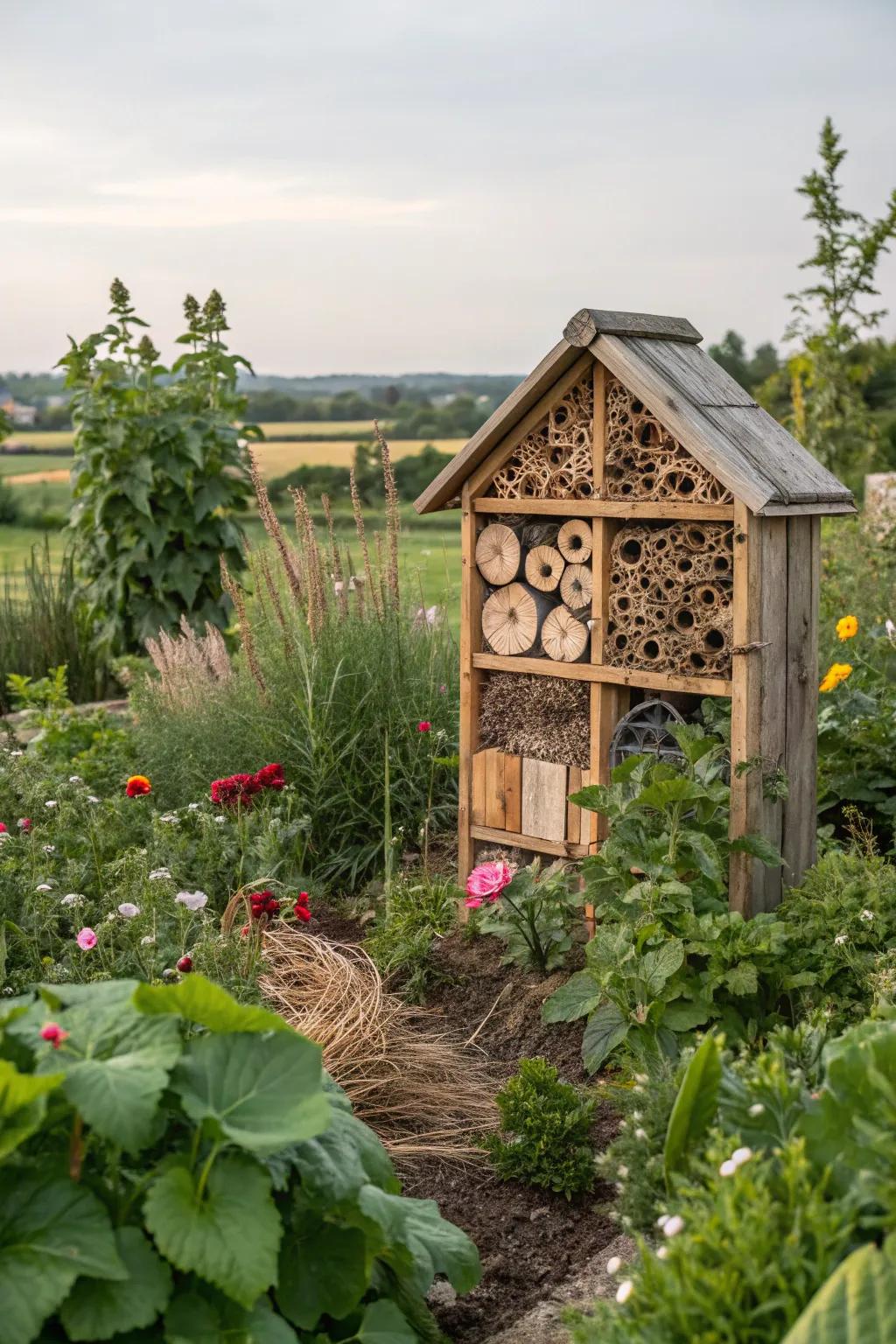
Encourage beneficial insects by constructing a bug hotel. My bug hotel is a whimsical addition that supports pollinators and pest control.
Try these:
- DIY Bug Hotel Kit: Assemble your own whimsical bug sanctuary and invite beneficial insects into your garden.
- Natural Bamboo Canes: Enhance your bug hotel with these bamboo canes, perfect for nesting solitary bees.
- Wood Logs for Insect Habitat: Include wood logs in your bug hotel design to attract diverse insect species.
7. Install a Small Pond
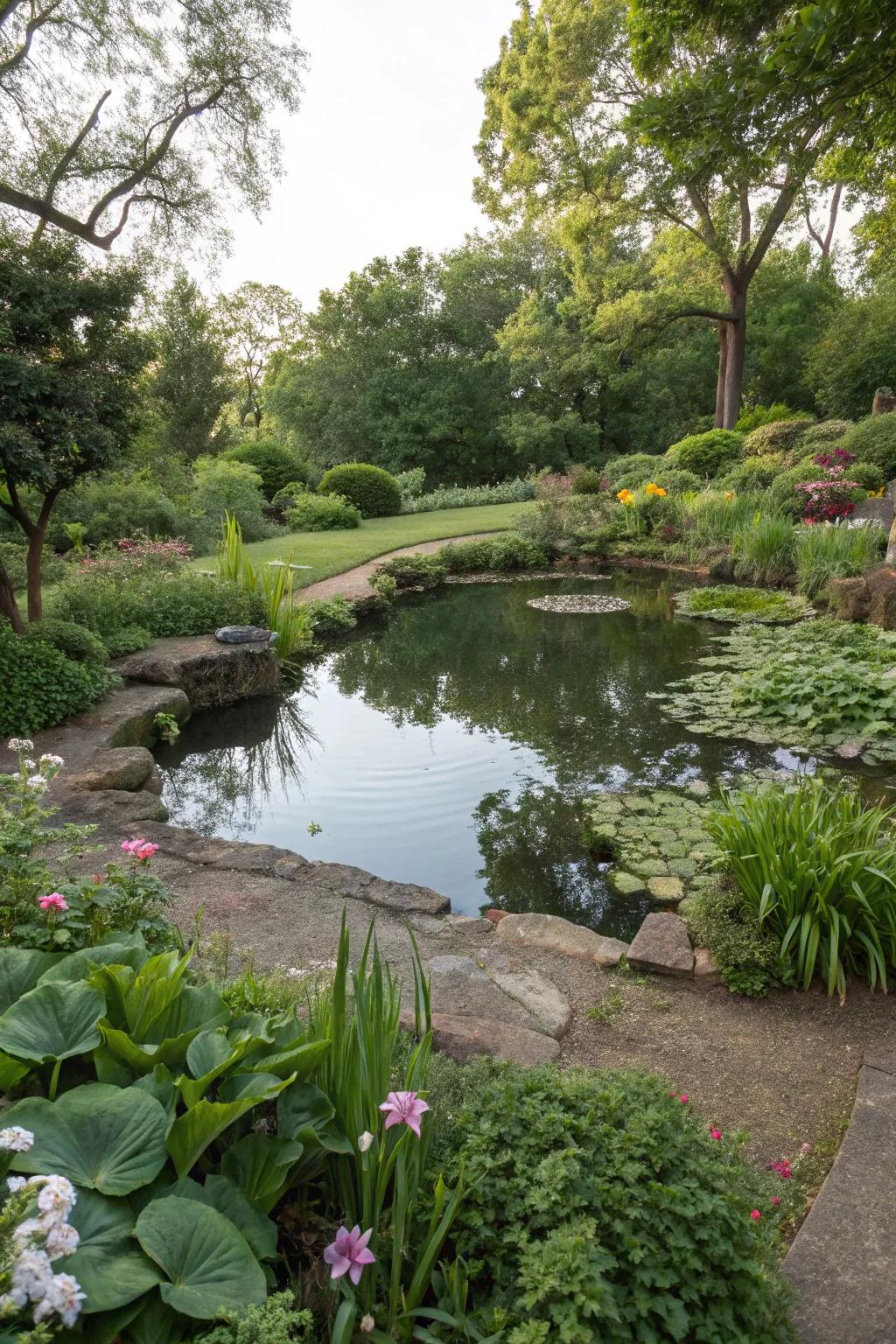
A small pond adds serenity and attracts beneficial wildlife. In my garden, frogs and dragonflies have made a home, creating a balanced ecosystem.
Items that may come in handy:
- Pond Liner: Ensure your pond is leak-proof and durable with a quality liner. Perfect for any backyard.
- Pond Pump: Keep water moving and healthy with an efficient pond pump. Essential for vibrant ecosystems.
- Aquatic Plants Kit: Enhance pond aesthetics and health with diverse aquatic plants. Easy to plant and maintain.
8. Harvest Rainwater for Irrigation
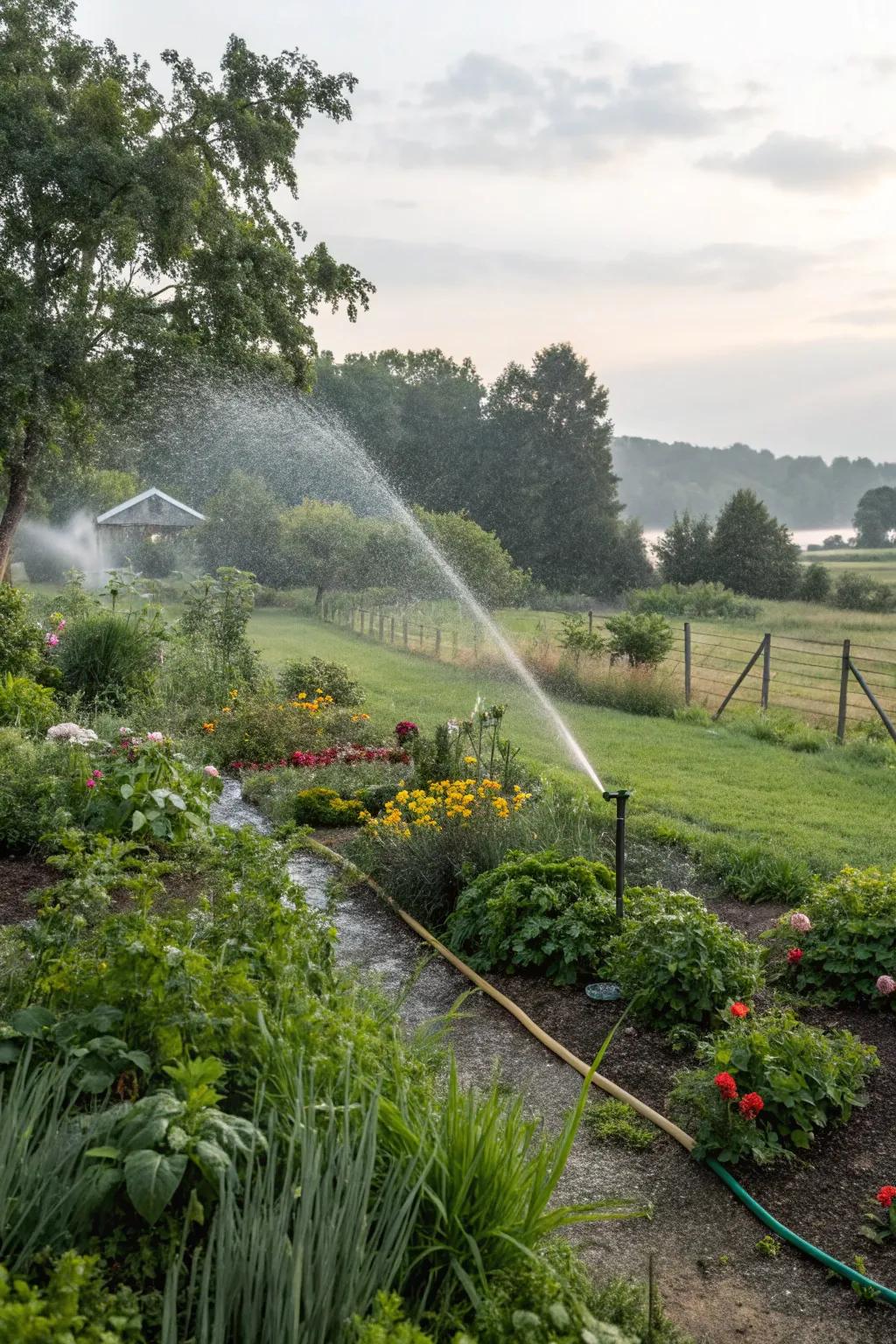
Maximize water efficiency by using collected rainwater for irrigation. My garden thrives even during dry spells thanks to strategic water use.
A few things you might like:
- Rain Barrel with Spigot: Capture and store rainwater efficiently and reduce water usage in your garden.
- Garden Hose Timer: Automate irrigation with a hose timer to ensure consistent watering using collected rainwater.
- Drip Irrigation Kit: Install a drip irrigation system to maximize water efficiency throughout your garden.
9. Create an Outdoor Living Space

Integrate a cozy outdoor living area to enjoy your garden’s beauty. My garden includes a quaint seating nook where I unwind after a day’s work.
Check if these fit your needs:
- Outdoor Patio Furniture Set: Enhance your outdoor nook with a comfy patio set to relax and enjoy nature’s beauty.
- Weatherproof Outdoor Cushions: Add comfort and style to your seating with durable, weatherproof cushions in various colors.
- Garden Side Table: Complete your cozy corner with a stylish garden side table for your drinks and books.
10. Create a Permaculture Paradise
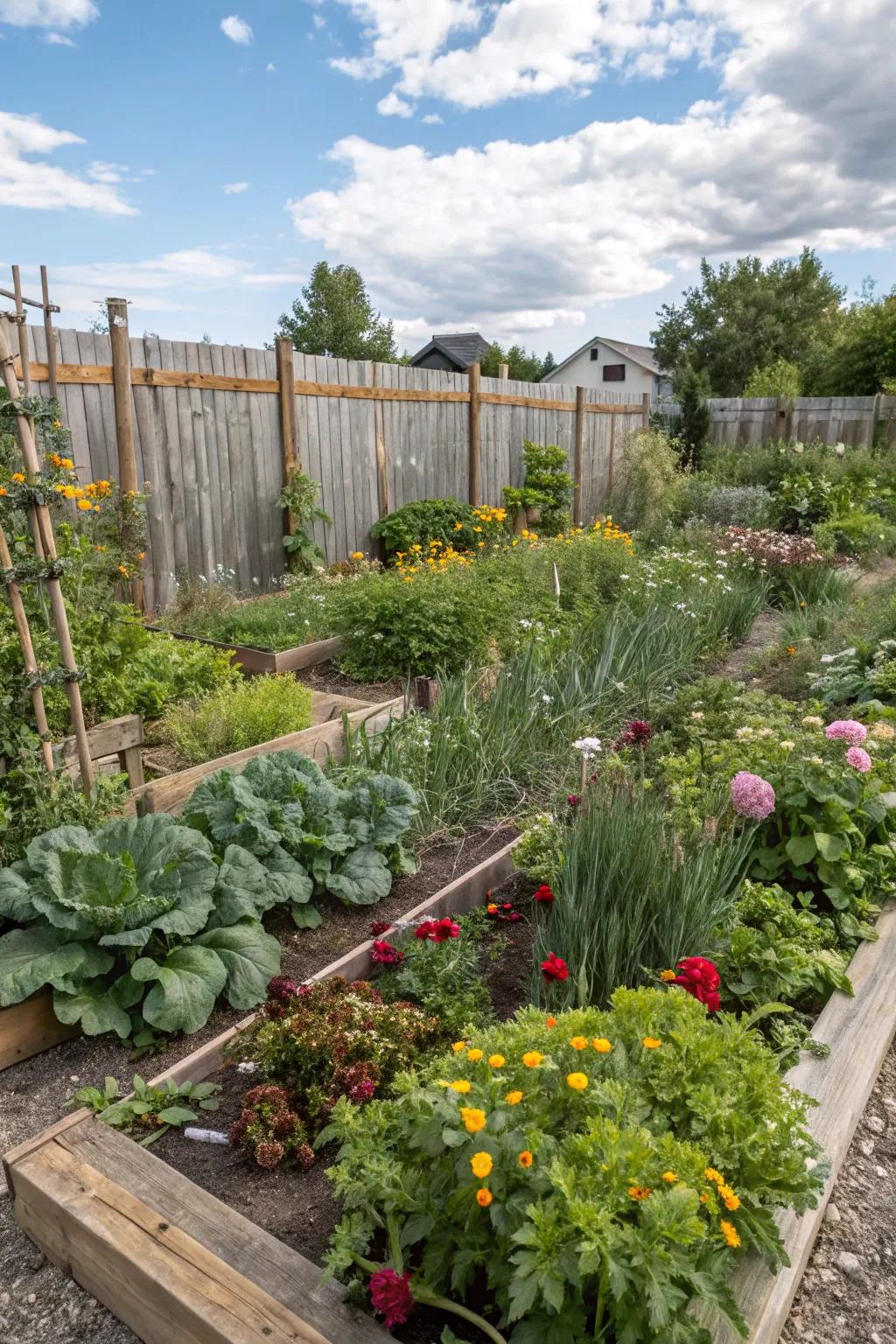
Permaculture is all about designing with nature in mind. I’ve found that using permaculture principles like companion planting and natural pest control has transformed my garden’s productivity.
May just do the trick:
- Companion Planting Guide Book: Explore new planting combinations to maximize yield and health in your garden naturally.
- Organic Pest Control Spray: Protect your plants from pests using eco-friendly, natural solutions that enhance garden health.
- Raised Garden Bed Kit: Build the foundation of your permaculture garden with easy-to-assemble, durable raised beds.
11. Opt for a No-Mow Zone
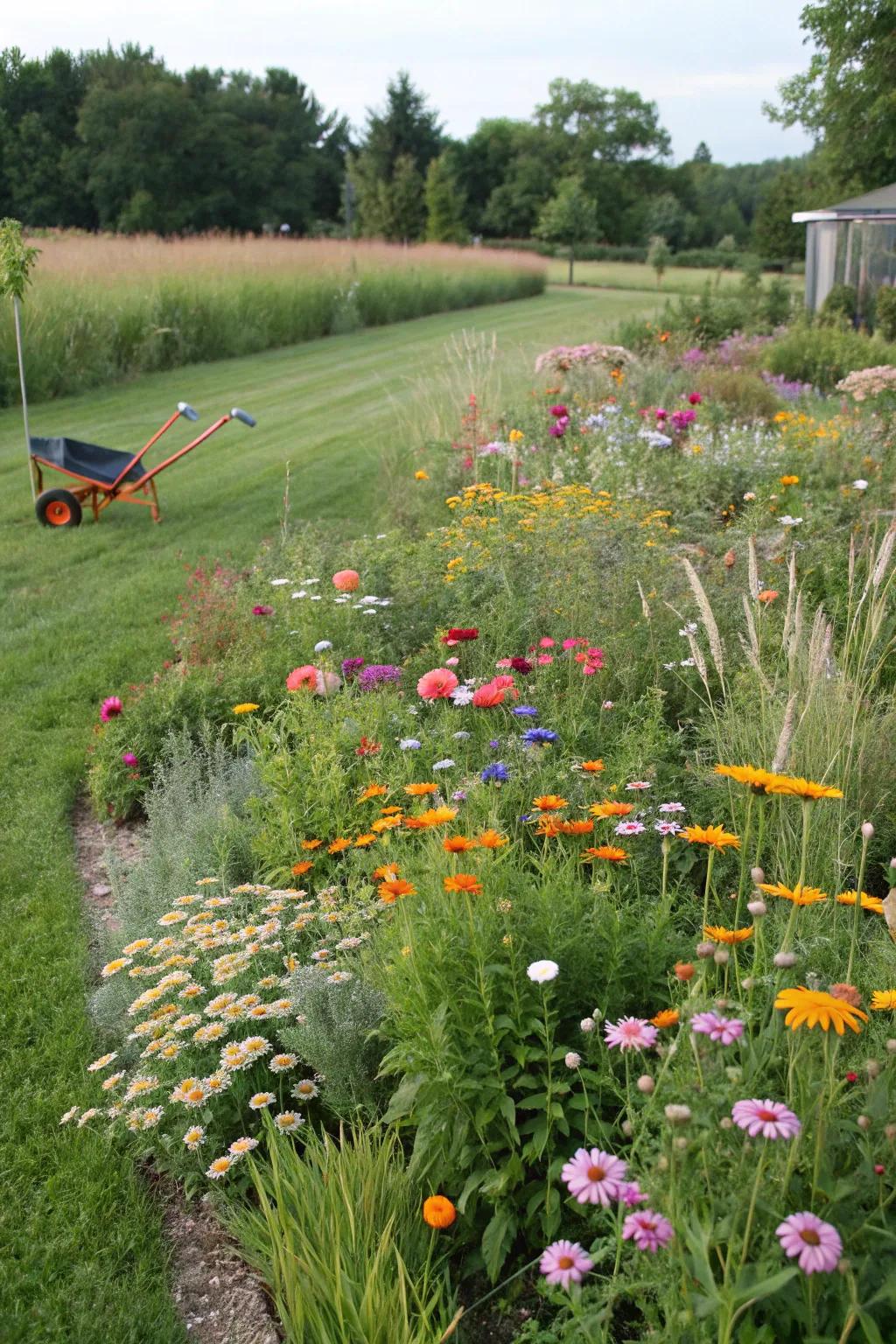
Allowing a section of your lawn to grow wild supports pollinators and reduces maintenance. My no-mow area has become a lively meadow buzzing with life.
These products might help:
- Pollinator Flower Seed Mix: Sow pollinator-friendly wildflower seeds to attract bees and butterflies to your no-mow meadow.
- Garden Wheelbarrow: Transport tools and mulch easily with a sturdy wheelbarrow, perfect for your meadow maintenance.
- Wildflower Identification Guide: Identify native wildflowers in your meadow with an easy-to-use field guide.
12. Utilize Recycled Materials
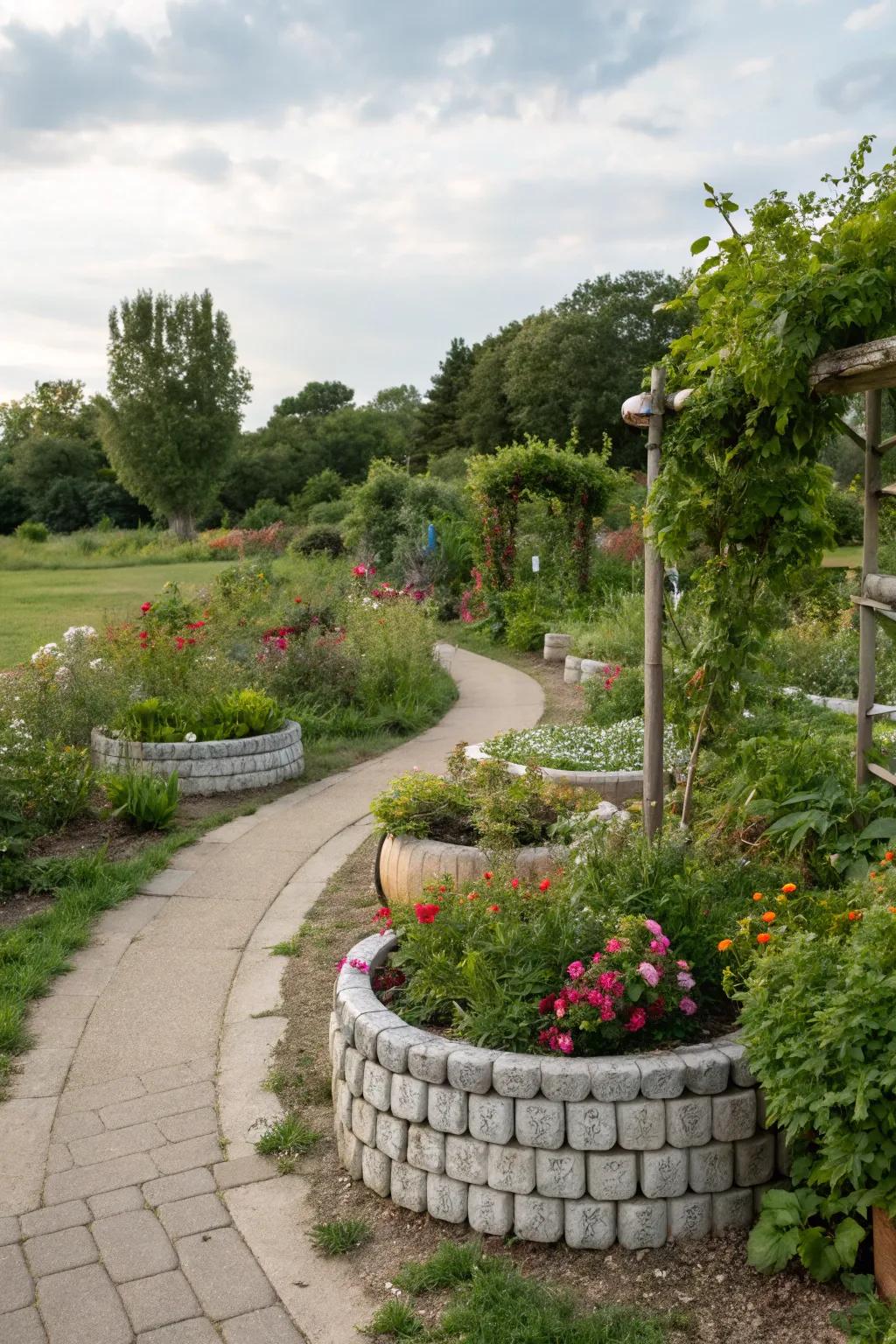
Incorporate recycled materials in your garden design to cut costs and waste. I’ve used old pallets and bricks as charming planters and pathways.
A few relevant products:
- Recycled Wood Pallets: Transform your garden by using recycled wood pallets for innovative and eco-friendly planters.
- Reclaimed Brick Pavers: Enhance your pathways with reclaimed brick pavers for a rustic and sustainable garden touch.
- Recycled Plastic Planters: Add vibrant colors to your garden with durable, recycled plastic planters that require low maintenance.
13. Plant for Seasonal Interest
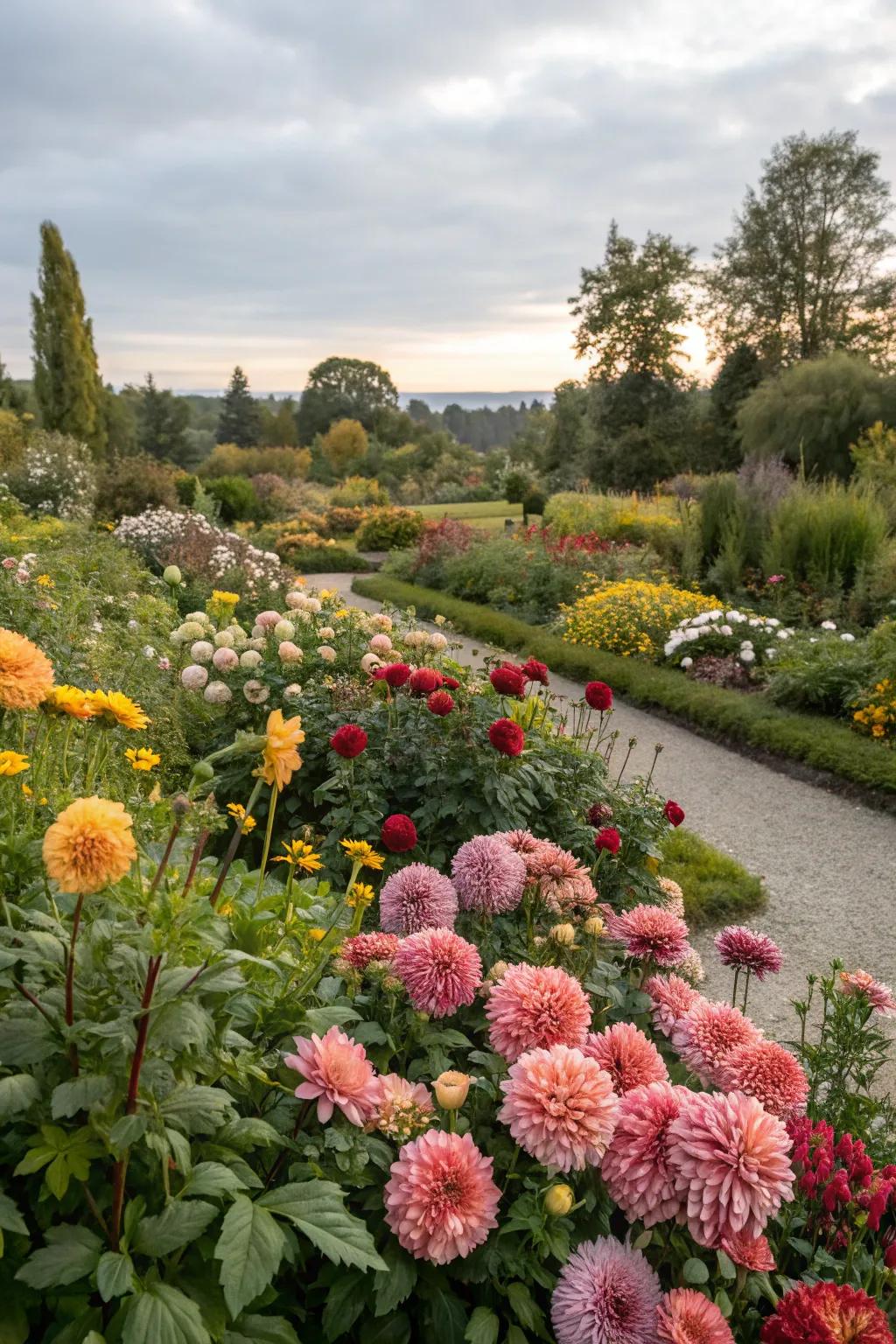
Incorporate plants that offer year-round beauty. By choosing species with staggered blooms, my garden remains attractive through every season.
These products might be useful:
- Seasonal Flower Bulb Mix: Transform your garden with vibrant blooms throughout the year. Plant today for seasonal beauty!
- Perennial Plant Collection: Enhance garden longevity with diverse perennial plants. Enjoy multi-season beauty, year after year.
- Shrub and Bush Assortment: Create a lush, colorful backdrop with diverse shrubs and bushes for year-round garden appeal.
14. Incorporate Vertical Gardening
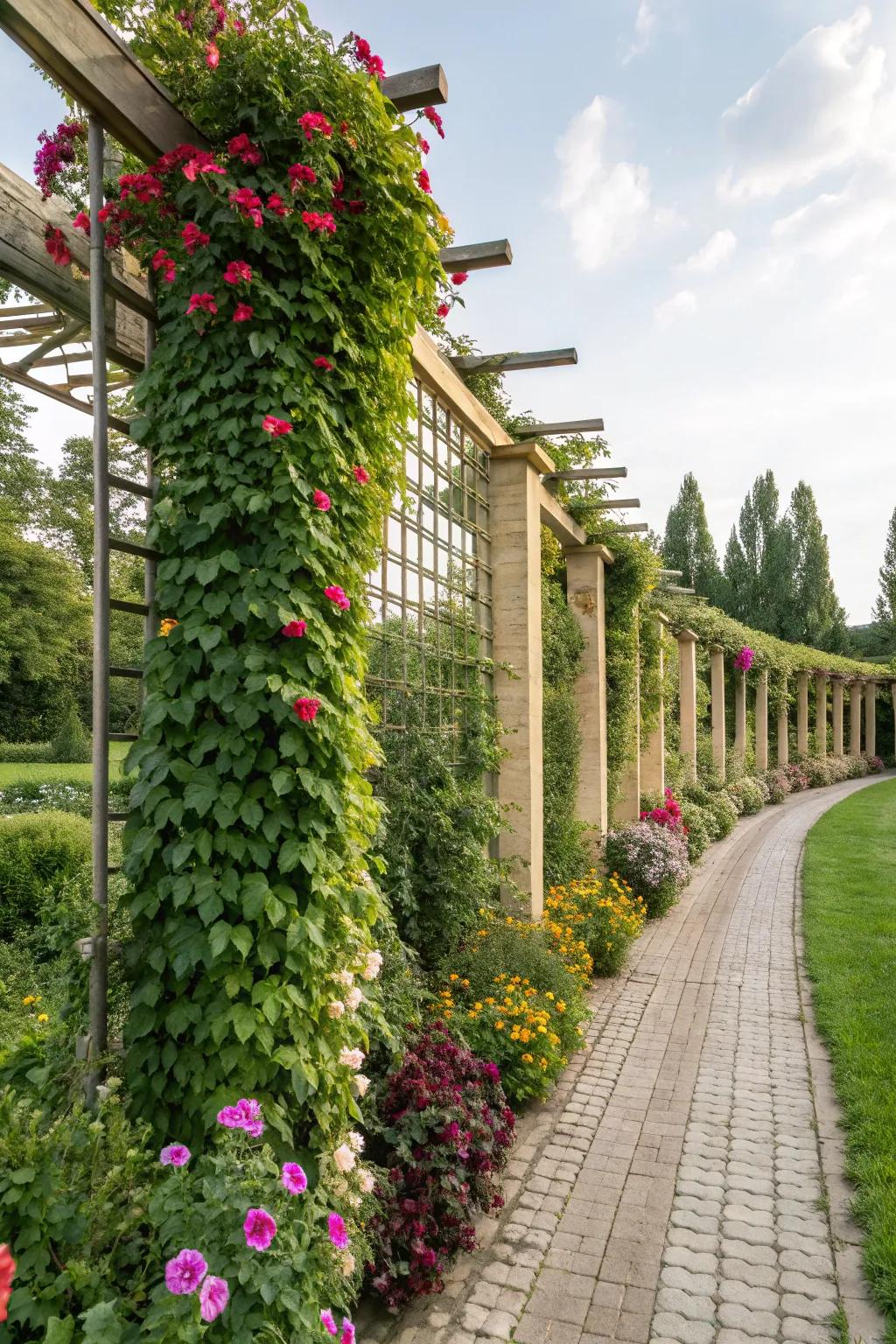
Maximize space and minimize footprint with vertical gardens. I’ve utilized walls and trellises to add greenery without sacrificing ground area.
You might give these a try:
- Wall-Mounted Planters: Transform your walls with these planters. Ideal for creating a lush vertical garden effortlessly.
- Climbing Plant Supports: Encourage your plants to grow upwards with these supports for a thriving vertical display.
- Stackable Vertical Garden Planter: Maximize your space with stackable planters. Perfect for herbs, flowers, and small vegetables.
15. Cultivate Healthy Soil
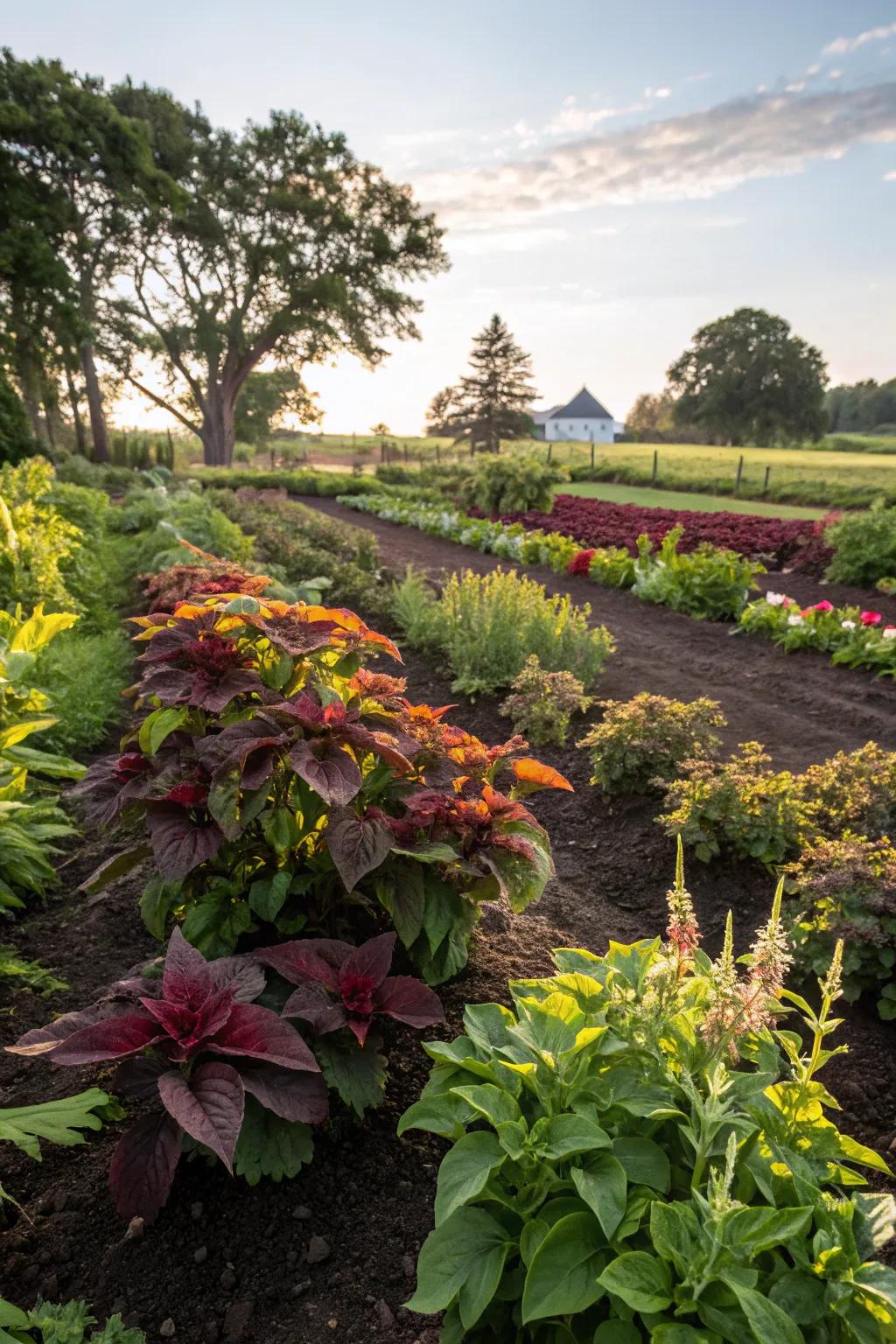
Healthy soil is the foundation of any garden. I’ve enriched my garden’s soil with homemade compost and natural mulches, resulting in vigorous plant growth.
Give these a look:
- Compost Bin: Turn kitchen scraps into rich compost to nourish your garden efficiently and sustainably.
- Natural Mulch: Add natural mulch to retain moisture, suppress weeds, and enhance soil health effortlessly.
- Soil pH Tester: Ensure optimal plant growth by testing soil’s pH levels for better nutrient absorption.
16. Create a Living Fence
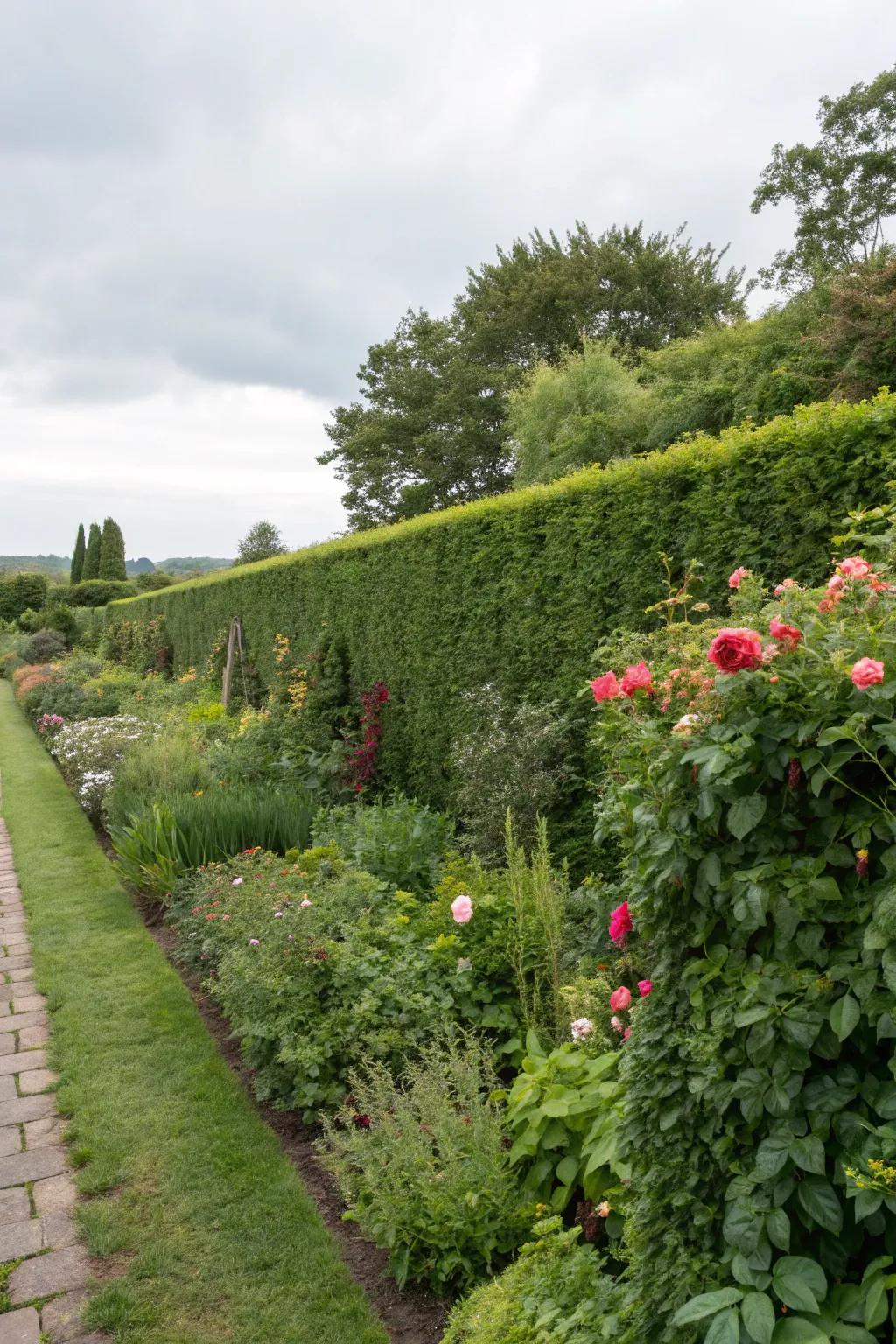
Use hedges instead of traditional fences to enhance biodiversity. My living fence not only defines boundaries but also offers shelter to wildlife.
Useful items to consider:
- Hedge Trimmer: Easily maintain your living fence with a lightweight, powerful hedge trimmer for precise cuts.
- Organic Fertilizer: Boost your plant growth naturally with high-quality organic fertilizer designed for lush greenery.
- Gardening Gloves: Protect your hands while working on your living fence with durable, comfortable gardening gloves.
